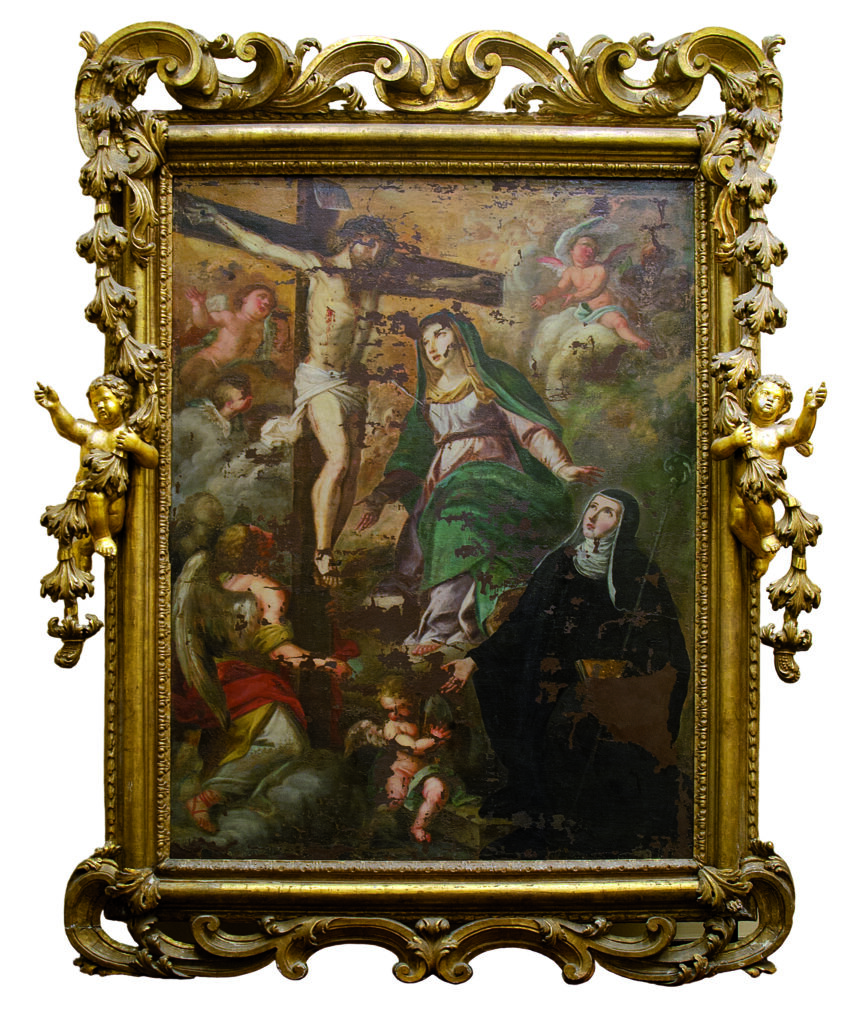
Author: Antonio Filocamo (Messina 1676-1743), attr.
Dating: Third decade sec. XVIII
Material: Oil on canvas
Dimensions: cm 180×110
Location: Milazzo, Municipal Palace – Fund of Buildings
The canvas from the church of the Benedictine monastery of the Badia del S.S. Salvatore di Milazzo, founded in 1616 in the walled city, where there are still ruins, and moved to the current site after 1718; the work, remembered in the sacristy, is now in storage at the Municipal Palace of Milazzo. In the setting of Marattesco, the figures of the Crucifix, the Virgin Mary and Saint Scholastica, sister of Saint Benedict, are placed with calculated spatial perspective, against a background of sky animated by figures of putti among thick clouds. The Crucifix, studied academically in the rich seventeenth century Sicilian and Roman tradition, also at the school of Maratta, is plastically built with subtle luministic effects, today partly lost to the poor conditions of the canvas. More conventional the figures of the Virgin, made with measured linear and chromatic rhythm in the traditional combination of the pink dress with the blue mantle and Santa Scolastica, caught in an expression of pathetic devotion. In the foreground there is an angel with large feathered wings, depicted as a back and a winged putto.